
JoeMussulman.com
Balloon Art
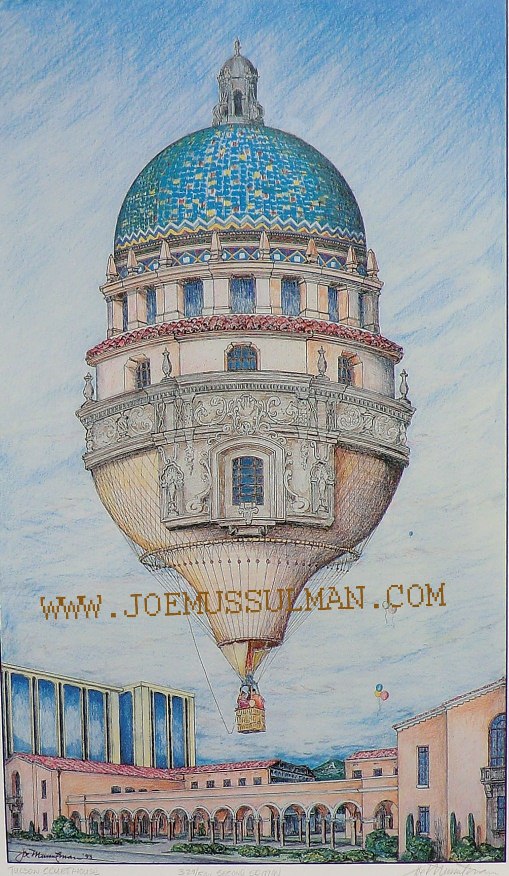 |
"The Old Tucson Courthouse" The old courthouse dome rises into the desert sky above Tucson, Arizona, with the downtown landmark of "A" Mountain visible in the background. This Spanish Colonial structure is rumored to be the finest example of adobe-built hot air balloons in the southwest. |
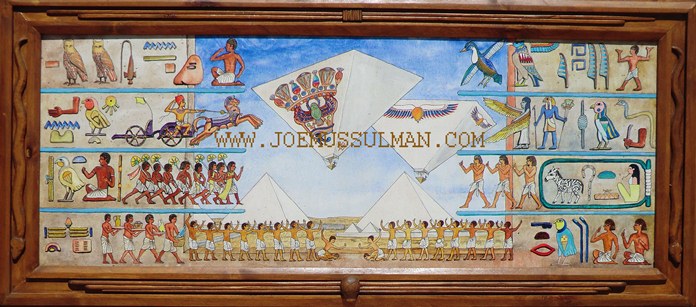
Acrylic on
Canvas (16" x 42") |
"Ancient Egypt" Across the top of the painting, the glyphs read, from left to right:
Line 1. "Hot
Breath (of) Flight Celebration"
The scarab
beetle on the first balloon is a sign of long life. The size of the
balloon is given in the heiroglyph on the right side above the
inverted pyramid basket (105,000 cu. ft.). Unknown to the Egyptians, the winged image on the side of the second balloon predicts the shape of the balloons of the future. |
|
Acrylic on canvas (20"x16") |
"Carved Stone balloon" 2nd Century BC India
An Extraordinary Indian stone carving, more than 2000 years old,
shows the sacred eucalyptus tree balloon of the time. smaller
plants, one potted, seem to ride like passengers between the upright
trunks.
Subtle color enhancements help the modern viewer imagine the
original craft in flight. |
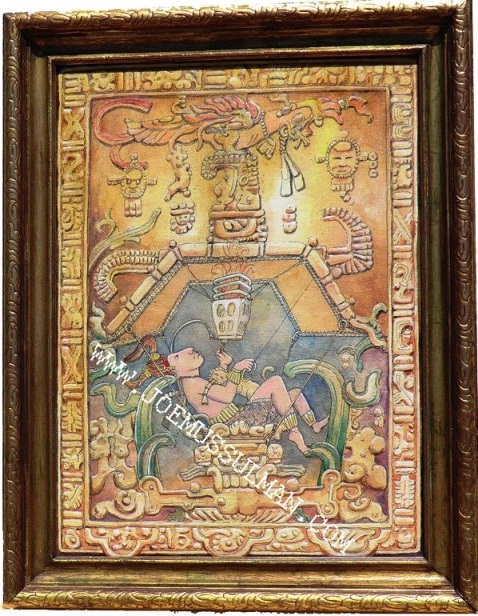 |
"Mayan Lord Pecal"
This carved
stone sarcophagus lid from the ninth century clearly shows the
details of a Yucatan peninsula balloon.
The firebird
across the top assures the chieftain/pilot a safe flight above the
jungles of Central America. |

Acrylic on canvas
(16" x 20") |
"Greek Krater -- Electra"
In Greek
mythology, the seven daughters of Atlas and Pleione were
named Electra, Maia, Taygete, Aocyone, Claeno, Sterope and
Merope. According to some versions of the myth, they
committed suicide from grief at the fate of their father
Atlas or at the death of their sisters, the Haydes.
A more common
version made them the attendants of Artemis, goddess of
wildlife and hunting, who were pursued by the hunter giant
Orion. The sisters were rescued by the gods and changed into
doves. After their deaths, they were transformed into stars,
but are still pursued across the sky by the constellation
Orion.
Only six of
the stars are readly visible to the naked eye. the seventh
was Electra, who left her place to avoid seeing the fakk of
her beloved city Troy.
|
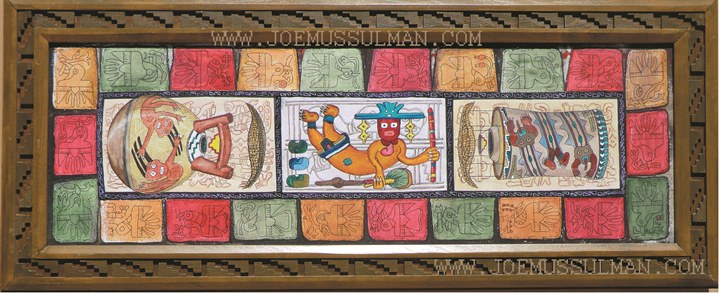 |
"Nazca Tapestry"
The flying figure with the baton and fan, thought to be a
shaman, presides between two vessel-shaped balloons. His
blue forhead ornament, shaped like a bird, signifies the
spirit that flies away.
The cylinder-shaped balloon shows a water god.
The double spout balloon shows two floating figures.
Surrounding these ancient aeronauts are birds with food in
their beaks to insure many successful flights. |

Prismacolor on
paper
(22"x12 1/2") |
"Kitsch"
Hjuki
(ee-yuh-kee) and his sister, Bil (beel) were forced to work every
night gathering water from a magic well. One night, moon saw the
children and, filled with pity, he took them to live in his house.
The children
are happy living on the moon, for now they gather water once a
month. When the moon is full, they are seen with a bucket and pole.
Over a few nights, Hjuki falls out of site. Later on, Bil
disappears. The moon is dark and empty.
In a few days,
the moon begins to fill, and the children may be seen once more,
first Hjuki and then Bil. |
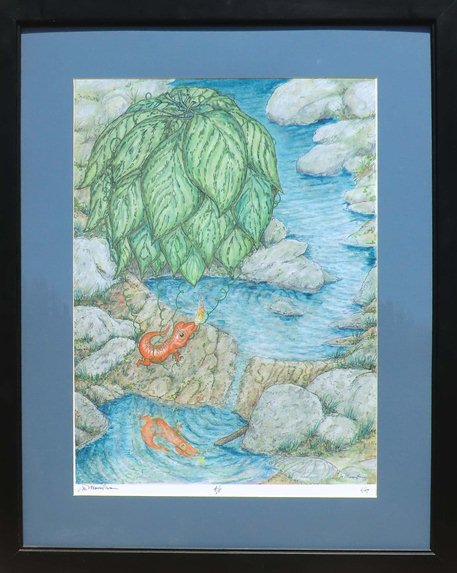
Prismacolor on Paper |
"Fire Salamander
This species of salamander builds his 'balloon' from leaves,
thus providing him with the ability
to float above the stream waters where larger insects fly.
Fuel for the flame is generated from digestive gases.
Ignition comes from two small pebbles
within his mouth that spark when clicked together. |
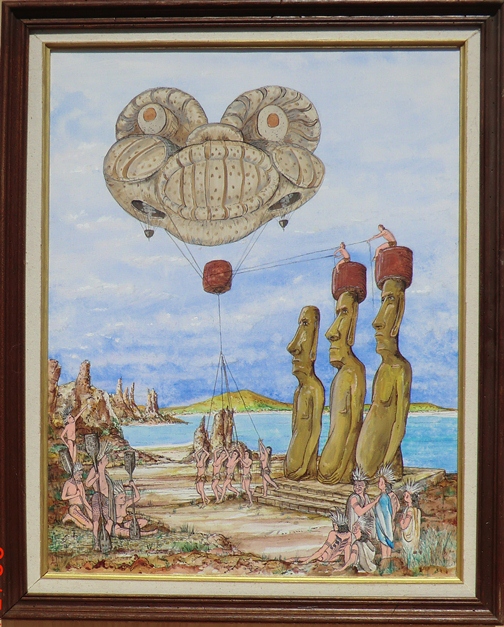
Acrylic on Canvas
(22" x 28") |
"Easter Island
The 35' tall volcanic rock 'aku' sculptures were erected
primarily on the coast.
Typically, these figures were then topped with a barrel
shaped hat made of
light weight red scoria stone. Lesser
known arts of the island include wood carvings and
sculptures made of wood fiber, paper mache made with grass
and painted bark cloth.
This painting depicts the installation of a "top knot" hat
using a barkcloth fiber |
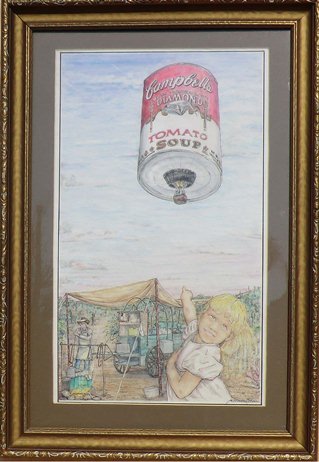
Prismacolor pencil |
Campbell's Soup
"Soups On"
The chuckwagon tailgate is open and the dutch ovens are full
of beef and beans |
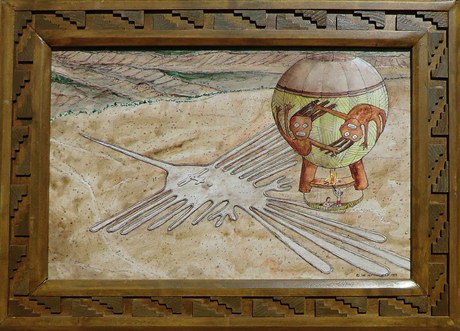
Acrylic on Hardboard
(12" x 18") |
"Ancient Nazca
The 2,000 year old 'Nazca Lines' on the plains of southern
Peru depict figures that can only be descerned from the air.
The ancient aeronauts viewed these immense figures in
low-flying cotten woven
balloons with reed baskets similar to the boats used in the
highland Lake Titicaea |

Acrylic on canvas |
"Ganesha"
Ganesha, the
elephant headed Hindu god is typically venerated as the
Remover of Obstacles. Ganesha has been ascribed many other
titles and epithets. He has a litany of "a thousand names of
Ganesha". Each name conveys a different meaning and
symbolizes a different aspect of Ganesha. He has a large
belly because all aspects of the universe from the past,
present and the future are within it.
Radha Krishna
and Ganesha are only three of the vast pantheon of Hindu
gods and goddesses. |
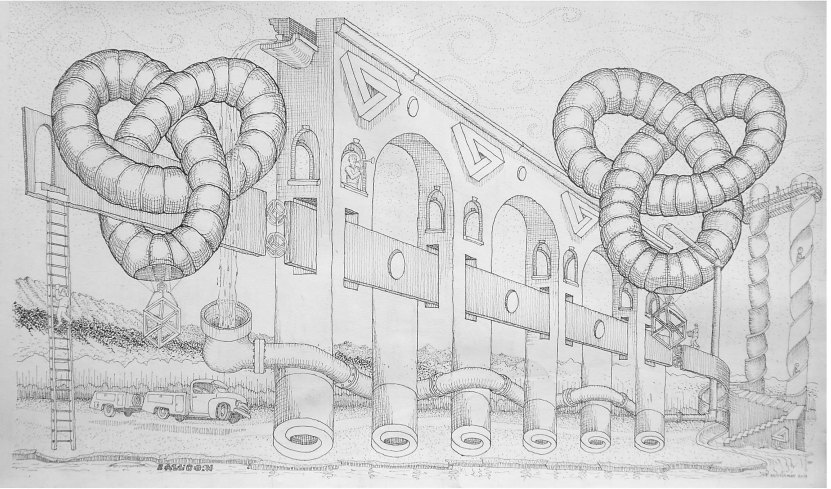 |
If MC Escher designed a balloon |
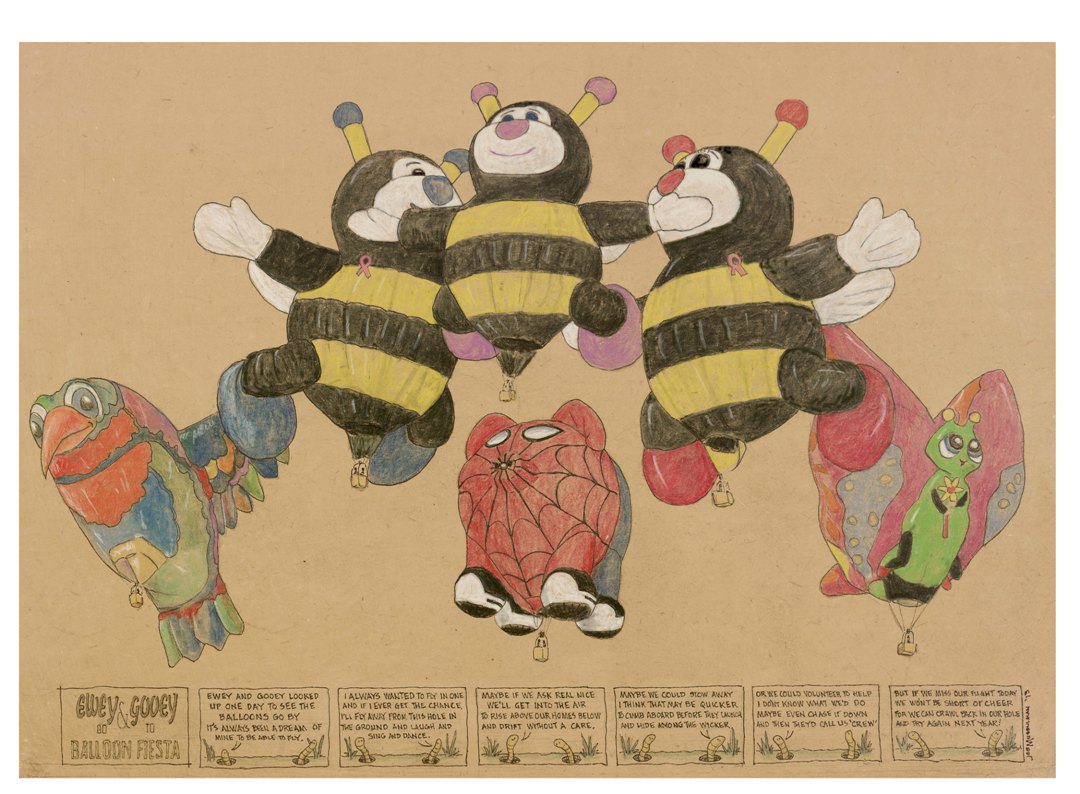 |